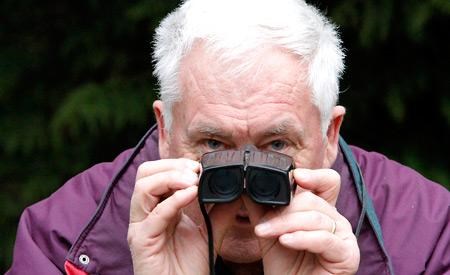Birdwatchers will be polishing their binoculars and opening their guidebooks for the Great Backyard Bird Count.
The event, led by the Cornell Lab of Ornithology and the National Audubon Society in conjunction with Bird Studies Canada, is a chance for bird lovers across the continent to pick their favourite spot and help count birds. Watchers are asked to spend at least 15 minutes on one day from Friday to Monday, February 18 to 21, or preferably everyday, watching birds, identifying species and writing down the most of each species they see at one time.
Information collected from the bird count will go toward more than general interest. Scientists and ornithologists use the information from initiatives like this to help determine an accurate count on birds. This information allows them to track whether certain species are increasing or decreasing, whether migratory patterns are changing due to global warming or other concerns, the spread of diseases like West Nile Virus and other research.
Sherri Wretham, Malaspina Naturalists Club secretary, said she has been a birdwatcher since childhood. More people birdwatch than any other sport in North America, she said proudly. Wretham and her husband Gilbert have bird feeders in their backyard and enjoy watching little birds coming and going, especially the hummingbirds. She said she looks at the birds and feeders as money saved on art for the walls and far more interesting to look at.
“It’s way better than TV,” said Wretham. “The squabbles they get in, who drives who away and what they eat and when they eat it.”
This will be the first year that Wretham and her husband will be taking part in the event. Every year they take part in the National Audubon Society’s Christmas bird count but the three-day weekend event is new to them. Wretham estimates she and her husband will probably spend three or four hours per day observing their feeders and taking a tally of what shows up. She expects to see 70 to 80 different varieties of bird species over the course of the count.
Clyde Burton is another lifetime birdwatcher who will be participating in the bird count. As a child growing up in Newfoundland, Burton raised seagulls that fishermen used to catch for him. By raising the birds to maturity and then letting them go once ready, Burton developed what would become a lifelong love of birds.
“I was always interested in bird behaviour,” said Burton. “I’m obsessed with it, you might say.”
The most spotted birds out in the woods, where Burton does most of his watching, will be ducks, winter wrens and maybe an owl. In the backyard expect to see juncos, song sparrows, house finches, Steller’s jays and Northwestern crows, among others. Burton said he’s happy to help anyone out who has taken a photo of a bird and needs help identifying it. He also suggested that if someone sees a bird that they think is one species except that something about it is a little different in terms of colouring or markings, it’s probably something else. To reach Burton readers can call 604.485.0285.
Anyone can take part and all watchers need to do is write down the species of birds observed and count the greatest number of the species seen together at one time. This helps prevent the same birds from being counted twice. From there go to www.birdsource.org until March 1 to submit the list. Watchers can do separate counts from multiple locations and there is a separate count for travelling counters, as opposed to stationary counters.



